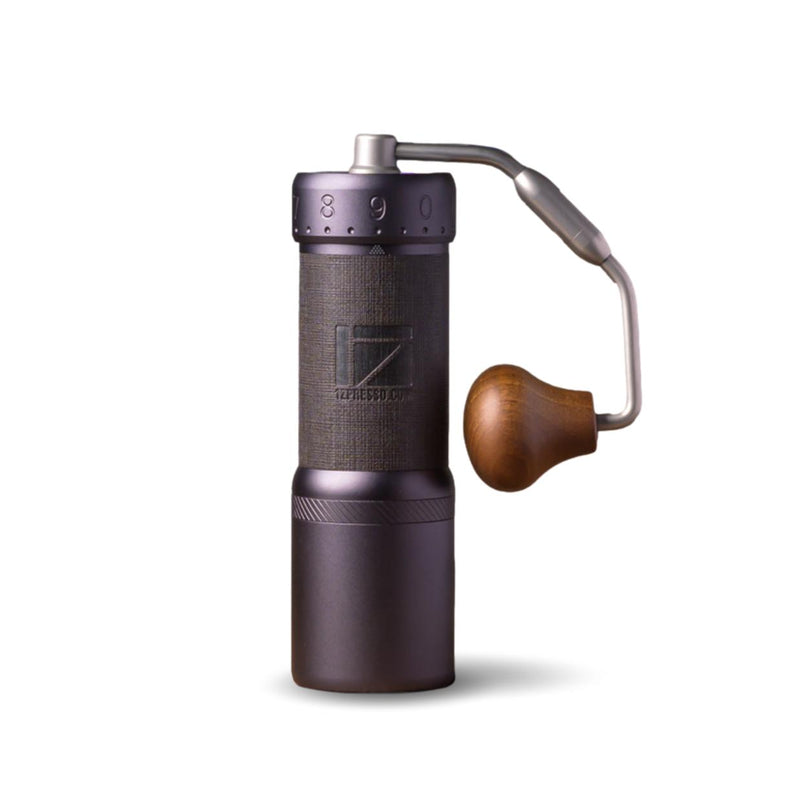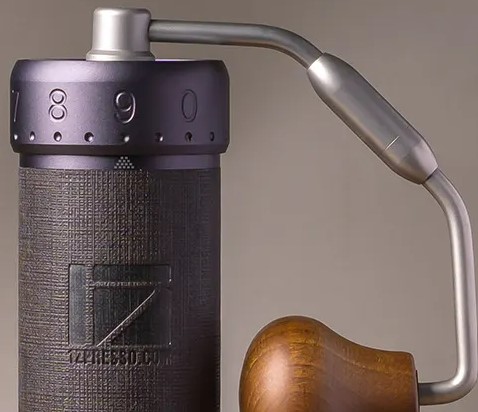Craftsmanship Satisfies Performance: Introducing 1Zpresso J-Max Coffee Grinder
Craftsmanship Satisfies Performance: Introducing 1Zpresso J-Max Coffee Grinder
Blog Article
Master the Art of Grinding Coffee Beans: A Guide to Coffee Grinders
For coffee lovers, the procedure of grinding coffee beans is more than just a regular task; it is an art kind that can significantly influence the taste and quality of the last mixture. Recognizing the subtleties of various mill kinds, choosing the proper work dimension, and utilizing the right strategies are necessary steps towards accomplishing that best mug of coffee.
Kinds Of Coffee Grinders
There are three key types of coffee mills frequently used by coffee enthusiasts: blade grinders, burr grinders, and hand-operated mills. Blade mills are the most fundamental kind, utilizing an easy blade to cut the coffee beans. While they are budget-friendly and simple to make use of, they frequently result in irregular coffee premises because of inconsistent grinding. Burr mills, on the other hand, use even more accuracy by squashing the beans in between a moving grinding wheel and a non-moving surface area. This leads to a consistent grind dimension, which is vital for a regular coffee flavor. Burr mills come in both flat and conelike forms, each offering a little different grinding characteristics.
Hands-on mills, as the name recommends, call for hand-operated initiative to grind the coffee beans. They are commonly chosen by those who delight in the procedure of hand developing coffee or for those that value portability. Hand-operated grinders can vary in style, from simple handheld designs to more complex kitchen counter variations. While they may call for more effort, hands-on grinders offer control over the grinding procedure, permitting individuals to adjust the grind dimension to their choice. Each kind of coffee mill has its advantages and perfect usage situations, dealing with the varied preferences of coffee enthusiasts.

Picking the Right Work Size
With an understanding of the different kinds of coffee mills, the next critical action in achieving the best cup of coffee is choosing the best work size. The work size plays a substantial function in figuring out the flavor account of your coffee (1Zpresso J-Ultra). Different brewing approaches require particular grind dimensions to enhance the extraction of flavors from the coffee grounds
For a coarse grind, perfect for French press and chilly brew methods, the coffee beans need to look like breadcrumbs, offering a durable and strong taste. Medium-coarse grinds, suitable for Chemex or Clever Dripper, have a texture similar to coarse sand, supplying a balanced preference.
Tool grinds, commonly made use of in drip coffee manufacturers, have an uniformity appearing like normal sand, leading to a well-rounded taste. Fine grinds, best for espresso machines, are comparable to table salt, yielding an abundant and intense preference. Finally, extra-fine grinds, utilized in Turkish coffee, are as great as powdered sugar and create a solid and powerful mixture.
Grinding Techniques for Optimum Flavor
To extract the max capacity of taste from your coffee beans, grasping proper grinding methods is necessary. Consistency is key when it involves grinding coffee beans for optimal flavor. Guaranteeing that the coffee beans are ground uniformly is crucial to attain a balanced removal throughout the brewing procedure. One of the essential techniques for enhancing taste is to adjust the grind size based upon the developing method being utilized. A fine grind is suitable for espresso makers, while a coarse grind is more appropriate for French press brewing. In addition, the grinding time plays a considerable role in taste extraction. Over-grinding can cause a bitter preference, while under-grinding might result in a sour taste. It is recommended to experiment with different work dimensions and brewing times to find the ideal equilibrium that suits your preference preferences. By focusing on these grinding techniques, you can boost the taste account of your coffee and enjoy a more gratifying mug every time.
Maintenance and Cleaning Up Tips

Replace any worn-out components immediately to maintain the quality of your coffee grind. By complying with these upkeep and cleansing ideas, you can make certain that your coffee mill proceeds to provide scrumptious fresh ground coffee for years to come.
Troubleshooting Common Mill Issues


Guaranteeing your coffee grinder operates smoothly requires proficient troubleshooting of common concerns that might develop during its usage. One common issue with coffee grinders is irregular grind dimension.
An additional frequent concern is grinder blocking. This can happen when oils from the coffee beans develop up and block the mill's chute. To solve this, 1Zpresso J-Max take apart the mill and clean all components thoroughly, paying unique attention to the chute and burrs. In addition, bear in mind overfilling the receptacle to avoid blockages.
Last but not least, if your mill is producing extreme sound during procedure, it might show a trouble with the motor or internal parts. In such situations, it is advisable to consult the maker's instructions for fixing actions or look for expert aid to diagnose and remedy the concern promptly.
Final Thought
To conclude, mastering the art of grinding coffee beans includes recognizing the various types of coffee grinders, selecting the appropriate work size, utilizing appropriate grinding methods for optimum taste, and preserving and cleaning the grinder on a regular basis. By adhering to these guidelines and troubleshooting usual grinder problems, coffee fanatics can boost their coffee developing experience and enjoy a delicious cup of coffee every single time.
Report this page